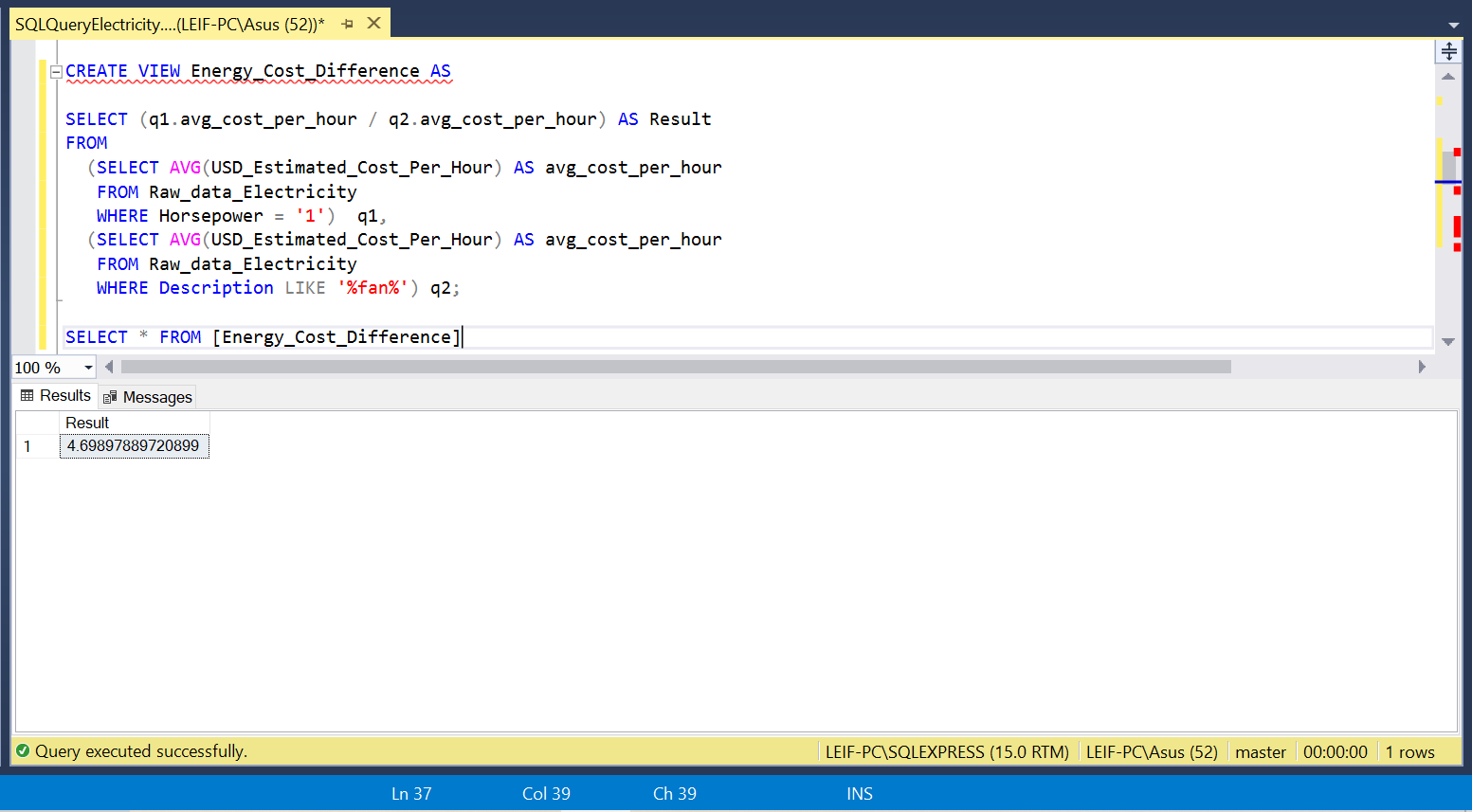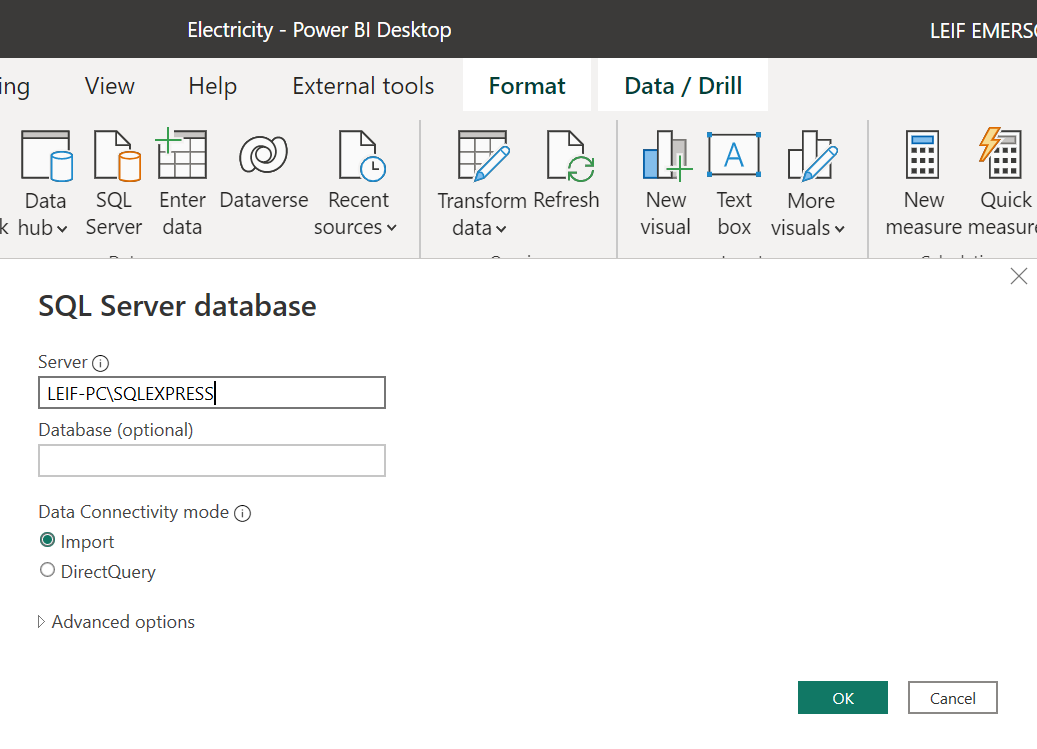Aircon Analysis Dashboard
Problem Statement
My Filipino mom always scolded me for using the Air Conditioner as a child. It became more of a display at some point. Recently, I wondered how expensive is using an Air Conditioner for an hour. I also wondered the energy cost comparison of an Aircon vs an Electric Fan. Is it more efficient to use four electric fans than to use an Aircon? Surprisingly, no one has made a visual report about this topic yet.
Methodology
Data Collection
The data were taken from estimates of official Meralco websites. The data were categorized into Brand Capacity (hp), Description Model, Est. Energy Consumption Per Hour (kWh) and, Es. Cost Per Hour (Php). Most data were already provided in Meralco's data source, however unit cost was not included. I had to manually search for the unit costs using online sources.
Data Cleaning
I adjusted the power rate to P10.2 which is the current power rate. I removed the data where unit costs cannot be determined. I also removed null values and error values to avoid errors in Microsoft Power BI. Another problem I encountered was that I could not find the Philippine Peso in the Currency table which led me to convert the data to USD.
Data Analysis
For data analysis, I used SQL to analyze the data. Considering the size
of our dataset, Excel can also be used and uploaded directly to PowerBI.
I'll be using SQL for this project to demonstrate my SQL abilities. Using SQL, I created the table with their corresponding
headers and data type and then inserted the data from the CSV file to the
created table.
Although I could directly import the CSV file, I feel that this method is also better
to demonstrate that I can create tables from scratch.
After checking the data using the query
'SELECT * FROM Raw_Data_Electricity', the data seems to be complete.
*Note: the 'if' query at the first line is for automation purposes. It basically states to delete the
table Raw_Data_Electricity if it is not blank, and reinsert the new data. I plan
to add the automation process in the future.

After that, we can now compute for the calculations. To promote data integrity, I also did the calculations in Excel to verify the value
and all
the results match.
The first calculation is the Average Energy Cost of Aircon per hour. The SQL
query for this is simply selecting the average of the estimated cost per hour flex-column
where Horsepower is equal to 1.

The second calculation is Energy Cost Difference. This calculation would show the difference in terms of energy used (kWh) for Aircon vs Electric Fans. For the energy cost difference, I created a view that selects the Estimated Cost per hour for Aircons with a Horsepower of 1 and divided that by the Estimated Cost per Hour for Electric Fans. Estimated Cost per hour for Aircons with a Horsepower of 1 is aliased q1 while Estimated Cost per Hour for Electric Fans is aliased q2. From the result, it seems that the energy cost difference of 1HP Aircon vs Electric Fan is 469% (4.69 converted to percentage).

The third calculation is Energy Efficiency Difference. This calculation would show the difference in terms of energy consumption (kWh) for Conventional Aircon vs Inverted Aircon. Using the same process as Calculation 1, the data states that Inverter Airconditioners are 40.06% more energy efficient than Conventional Airconditioners.

After the calculations, we then add the calculations to our original table. We first add another column for the calculations and then insert the data using UNION query.

From there, we then add the SQL Server data to PowerBI.

To summarize, the results of data analysis suggest that the average energy cost per hour of Aircon is $0.0704 (≈₱3.52). Energy cost difference between 1 HP Aircon and Electric fan is 4.69x (469%). Lastly, using an inverter is 40.06% more cost efficient than conventional Aircons.
Data Visualization
If you want to take a look at the raw file including the working splicers and database, you can download it here:
Hold 'Ctrl' and press left-click to choose numerous items in the splicer list.
Conclusion
From the analysis, the general results suggest that
- $0.0704 (≈₱3.52) is the average energy cost per hour for 1 HP Aircon.
- Energy cost in Aircon is 4.69x more expensive compared to Electric Fan. You could use four electric fans at once and the energy cost would still be cheaper.
- 40.06% energy cost is saved when using an Inverter.
Additional Insights
Upon speculation, it seems that the cost per hour from the data of Meralco was low. It showed that the cost per hour is only around P4 while I was expecting a cost of around P8 per hour. The scenario reminded me of the importance of 'Garbage in, Garbage out'. If the data is wrong, the output will be wrong. Hence, data validation and data cleaning is an essential skill of a Data Analyst.
References:
https://meralcomain.s3.ap-southeast-1.amazonaws.com/images/ckeditor-documents/Orange%20Tag%20Appliances%202019_Fans.pdf?null
https://meralcomain.s3.ap-southeast-1.amazonaws.com/images/ckeditor-documents/Air%20Conditioners%20June%202020_0.pdf?null&fbclid=IwAR3DB6jVL40iDofQT_xl19_klS5nVhRGH-DvxHJurbKPMrdo2Q-vREUmsPk